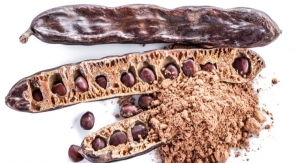Sean Moloughney12.15.09
Sales of energy bars have risen from less than $400 million in 1996 to more than $2 billion today, although this rate has now slowed and there are signs of saturation, according to Innova Market Insights.
The recent announcement that Kraft Foods had sold its Balance Bar nutrition bar business to a private equity firm perhaps indicates that the company’s interests are currently focused in other areas, the report stated. But what is its significance in terms of the energy bar market as a whole? Particularly, what is the impact in the key U.S. market?
The Innova Database recorded that more than 1600 cereal bars were launched in the first 11 months of 2009, up from the same period in 2008, but well down on the total of more than 2000 launched in the same period in 2007. The majority of launches have a health positioning, particularly in the U.S., where more than 90% of the launches recorded had a health positioning of some kind, compared with just about 80% in Western Europe. Most of these are marketed on a fairly general multi-benefit health platform, however, particularly in Europe.
It is only really in the U.S. that the market for more specialist nutrition bars has emerged from the relative obscurity of the specialist sports nutrition sector and into the mainstream. This has been led by three players: Powerbar, Balance Bar and Clif, which pioneered the U.S. energy bar market in the 1990s before two of the three were snapped up in 2000 by major multinational food companies looking for upcoming markets emerging from rising levels of interest in health and convenience. At that time, Balance Bar—originally developed for consumers with special dietary needs—was purchased by Kraft, while rival Powerbar was bought by Nestlé. Number three player Clif remained independent.
Balance Bar has retained its original 40-30-30 concept of 40% carbohydrate, 30% protein and 30% fat for sustained energy and hunger management over the years, as it has explored a huge range of product options, including energy bars, fruit and nut bars, natural and organic bars, high protein bars, meal replacement bars, 100-calorie bars and low-carbohydrate bars, among others. Many of these initiatives do not seem to have worked, however, with its range immediately prior to its sale encompassing just four lines: Original, Gold, Pure and Carbwell.
While Powerbar has continued to lead the market, Balance Bar has had problems and has been overtaken by former number three Clif. Looking at new product launches in the U.S. over the past 12 months, the Innova Database shows that while there was little evidence of activity from Balance Bar, Powerbar was continuing to develop its range with a strong sports and performance image, and Clif was focusing on the natural image of its range and extending into new flavors and formats, such as Clif and Luna Cookies and Clif Shot Roks.
Meanwhile, the overall cereal bars market in the U.S. is facing some problems after years of sustained growth. Sales through supermarkets, drugstores and mass merchandisers showed only slight growth in the first half of 2009, although nutrition and intrinsic health bars, including energy bars, saw the best growth in the market, ahead of breakfast bars and rice snack squares. The majority of the nutrition bars market goes through specialist outlets, multilevel marketing, etc., rather than mass channels, which may also be facing a downturn.
Lu Ann Williams, head of research for Innova Market Insights, stated: “Within the nutrition bars market, traditional-style energy bars are having to compete with a range of other health-oriented bars, not only those positioned on a general or multi-benefit platform, but also on a range of formats that are currently very much in vogue, including whole grain, high fiber, weight management, digestive health, free-from and natural.”
She emphasized that, “With the high levels of product activity apparent in the bars market in recent years, it may be that saturation point is approaching, with market maturity and segmentation reaching a point where further innovation opportunities are going to be more limited, possibly causing further shakeouts in the market and creating an even more challenging environment.”
The recent announcement that Kraft Foods had sold its Balance Bar nutrition bar business to a private equity firm perhaps indicates that the company’s interests are currently focused in other areas, the report stated. But what is its significance in terms of the energy bar market as a whole? Particularly, what is the impact in the key U.S. market?
The Innova Database recorded that more than 1600 cereal bars were launched in the first 11 months of 2009, up from the same period in 2008, but well down on the total of more than 2000 launched in the same period in 2007. The majority of launches have a health positioning, particularly in the U.S., where more than 90% of the launches recorded had a health positioning of some kind, compared with just about 80% in Western Europe. Most of these are marketed on a fairly general multi-benefit health platform, however, particularly in Europe.
It is only really in the U.S. that the market for more specialist nutrition bars has emerged from the relative obscurity of the specialist sports nutrition sector and into the mainstream. This has been led by three players: Powerbar, Balance Bar and Clif, which pioneered the U.S. energy bar market in the 1990s before two of the three were snapped up in 2000 by major multinational food companies looking for upcoming markets emerging from rising levels of interest in health and convenience. At that time, Balance Bar—originally developed for consumers with special dietary needs—was purchased by Kraft, while rival Powerbar was bought by Nestlé. Number three player Clif remained independent.
Balance Bar has retained its original 40-30-30 concept of 40% carbohydrate, 30% protein and 30% fat for sustained energy and hunger management over the years, as it has explored a huge range of product options, including energy bars, fruit and nut bars, natural and organic bars, high protein bars, meal replacement bars, 100-calorie bars and low-carbohydrate bars, among others. Many of these initiatives do not seem to have worked, however, with its range immediately prior to its sale encompassing just four lines: Original, Gold, Pure and Carbwell.
While Powerbar has continued to lead the market, Balance Bar has had problems and has been overtaken by former number three Clif. Looking at new product launches in the U.S. over the past 12 months, the Innova Database shows that while there was little evidence of activity from Balance Bar, Powerbar was continuing to develop its range with a strong sports and performance image, and Clif was focusing on the natural image of its range and extending into new flavors and formats, such as Clif and Luna Cookies and Clif Shot Roks.
Meanwhile, the overall cereal bars market in the U.S. is facing some problems after years of sustained growth. Sales through supermarkets, drugstores and mass merchandisers showed only slight growth in the first half of 2009, although nutrition and intrinsic health bars, including energy bars, saw the best growth in the market, ahead of breakfast bars and rice snack squares. The majority of the nutrition bars market goes through specialist outlets, multilevel marketing, etc., rather than mass channels, which may also be facing a downturn.
Lu Ann Williams, head of research for Innova Market Insights, stated: “Within the nutrition bars market, traditional-style energy bars are having to compete with a range of other health-oriented bars, not only those positioned on a general or multi-benefit platform, but also on a range of formats that are currently very much in vogue, including whole grain, high fiber, weight management, digestive health, free-from and natural.”
She emphasized that, “With the high levels of product activity apparent in the bars market in recent years, it may be that saturation point is approaching, with market maturity and segmentation reaching a point where further innovation opportunities are going to be more limited, possibly causing further shakeouts in the market and creating an even more challenging environment.”



























